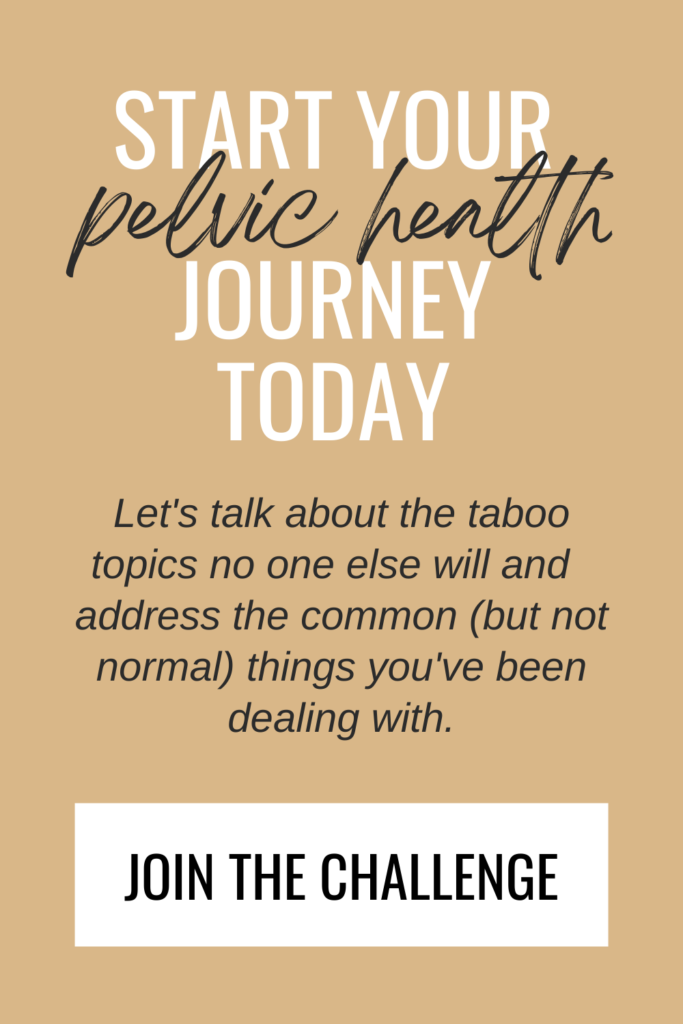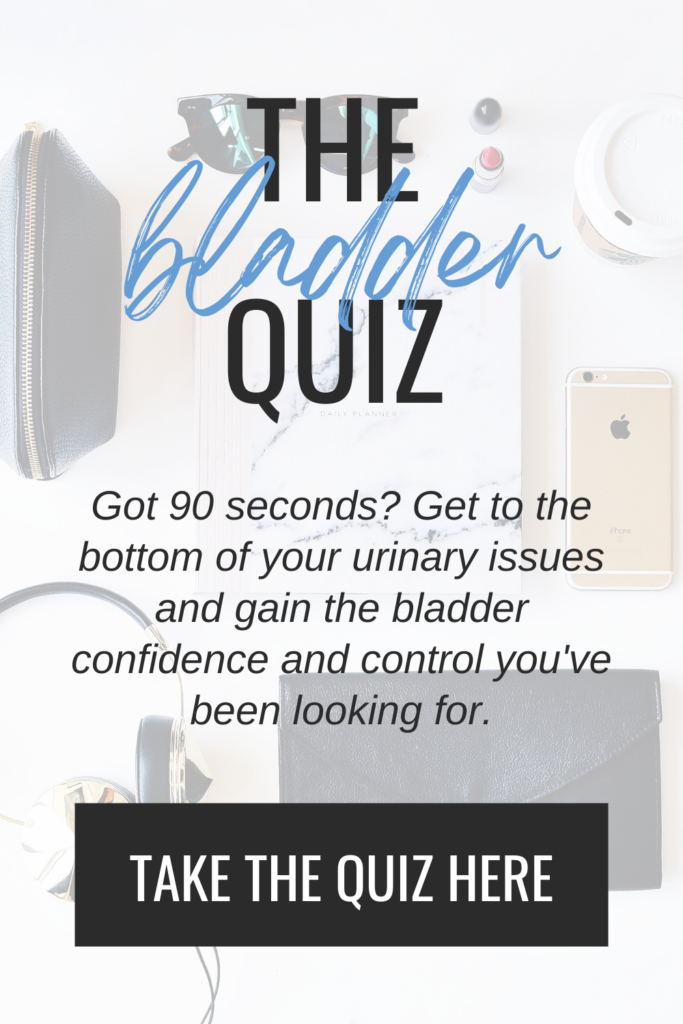I’ve never met someone who ~loves~ her period. Tolerates?…likely. Dreads?…yes. Because cramps, bloat, mood swings, acne, headaches, and bleeding for days on end iiiiiisn’t quite how your average woman wants to spend her valuable time. Add in factors like endometriosis (raises hand), PCOS (raises other hand), fibroids, and other forms of hormone imbalance, and many of us go into our menstrual phase crossing our fingers that mother nature spares us in the week ahead.
After laparoscopic excision surgery to remove my endometriosis and recovering from five years on synthetic hormones without a period, I needed a better game plan when it came to tracking and managing my menstrual cycle. I’m proud to say I now consider myself a seasoned period pro (yes…it took me almost 25 years), but I can predict exactly when my period is coming by tracking my basal body temperature and cervical mucus and then easily shift my daily routine to support my body during this time of the month.
RELATED POST: The Day I Quit Taking Birth Control For Endometriosis
RELATED POST: 5 Things I Did After Taking My Last Birth Control Pill
I’ve watched my relationship with menstruation change over the years from that same dreading and tolerating to now confidently embracing this time of the month due to a better understanding of what my body needs during my period. Not only is it empowering to be ridiculously in tune with your body, but there’s also something ~magical~ about begin in control of a week that’s historically chaotic, stressful, and draining.
My period has become something I (dare I say it) aaaaaactually look forward to *gasp*, and I believeyou can get here too by making just a few little adjustments to your menstruation week. I use this time as an invitation and opportunity to unapologetically slow down, rest, and get intentional with my self-care, and I’m excited to share how I do that with you here.
MY EXERCISE ROUTINE
I’ve always been someone who likes to workout, and CrossFit’s been my favorite form of exercise for the past five years. I like to sweat, lift heavy, transition quicky(ish) between movements to keep things interesting, and push my body’s limits. And there was a time when I was known to do this six days a week, 52 weeks of the year.
But then I learned that high intensity interval training (HIIT) can add stress to the body’s endocrine (hormone) system, and this is the laaaaaaast thing you need when you’re on your period.
I still do CrossFit style movements all other weeks of the month, transitioning between cardio and calisthenics, HIIT and Olympic lifting, power lifting and pilates as I go through the follicular, ovulatory, and luteal phases respectively. But during the week of my period, the first one to three days are spent sleeping in, resting, walking, stretching, and doing yoga flows, then I slowly ease into the follicular phase as the week progresses.
PELVIC FLOOR RELAXATION
It’s normal for the muscles of the pelvic floor to become tighter with menstruation as these, along with the uterus, are working hard to shed the endometrial lining. This is often the cause for pain and cramping during the menstrual cycle, and keeping these muscles relaxed is the best way to limit and even eliminate the discomfort commonly associated with your period.
While I have a regular pelvic floor strengthening regimen that I follow including kegels, core, and hip exercises, during my period I focus 100000% on relaxing my pelvic floor. I have a *chef’s kiss*, must-get guide detailing my top four strategies for relaxing the pelvic floor that you can find here, including stretches, posture awareness, breathing techniques, and a little something I call the “let it go”.
RELATED POST: My Daily Pelvic Floor Relaxing Routine + Why You Might Want to Try It Too
I’ve been able to almost fully eliminate period pain and cramps with these practices, and that’s saying a lot for someone who has endometriosis and used to find herself doubled over for days one through three of her cycle. The effectiveness of these techniques aaaaaalmost seems too good to be true, but I (and others who have tried this too) am proof that this is legit. If you take away one action item from this post, let it be this.
PULL OUT THE ESSENTIAL OILS
Okkkk…so let me preface this by saying that I’m not a ~huge~ essential oils person. I’d like to be (eventually), but so far I’ve put my time and energy elsewhere in my journey to an all-natural lifestyle; the current extent of my oil use is in my diffuser when I’m feelin’ fancy. But when I’m on my period, you’ll find me with a vile of peppermint essential oil within arm’s reach in the first few days of my bleed.
If the above pelvic floor relaxation strategies just aren’t relieving all of my cramping, a few drops of peppermint essential oils on my lower abdomen is sure to do the trick— I rub this on a few times a day for near instant pain relief. I also find it helps with headaches when applied to the temples or the base of the back of the head.
I know there are more essential oils that can help with other period symptoms, and if you have any recommendations, please post them in the comments! I’m always looking to learn more on this subject, and would love to hear your input on what’s worked for you.
INCREASE THE CALORIES
When on your period, your body’s workin’ extra hard to do all the things and this requires extra calories. If you find that you get the munchies and cravings while on your period, [this] is why. I’m not someone who counts calories or macros, but around this time of the month I consume an average of 300-500 extra calories a day to keep myself nourished and avoid being hangry.
For me, these extra calories look like a few hard boiled eggs in the morning with my smoothie, a bowl of guacamole when I get off work, a snack of smoked salmon with crackers, or a hearty handful of olives (tucked into a charcuterie board, of course)…yummmmmm. The goal is to get these extra calories from whole food fat and protein sources to help keep your energy and mood stable. And don’t be afraid to add a little extra salt (preferably sea salt or pink Himalayan) to your foods to help balance electrolytes and supplement the minerals you’re losing.
AVOID INFLAMMATORY FOODS
Because your body’s working hard during menstruation, the last thing you need is inflammation contributing to your system that’s already in overdrive. Everyone’s unique in which foods they may be intolerant to or have an inflammatory reaction to, but common culprits include artificial sweeteners, gluten, and alcohol.
I personally used the AIP protocol to find what my body was intolerant to, and while I tryyyyyyy to avoid those foods as much as possible for overall gut and hormone health, I’m extra diligent while on my period.
RELATED POST: The Time I Went AIP for a Month + the Recipes I’m Still Using Today
Common inflammatory responses mimic “typical” period symptoms, and if you struggle with cramps, a change in your stools, bloat, mood swings, or fatigue, what you put in your body (especially during this time of the month) can increase the severity of your menstrual complaints. Consider exclusively eating according to your body’s needs as a way to set yourself up for success during menstruation. This is a far safer and more effective way to improve your period symptoms in the long run than taking medication or masking the symptoms with hormone suppression.
SKINCARE SWAPS
I suffered from hormonal acne for far too long, and those annoying, painful, and even scar-causing breakouts are one of the more frustrating parts of periods IMO. I made the switch to Primally Pure skin care when going toxin-free to naturally manage my endometriosis, and the benefits I’ve seen in my overall skin health and the reduction in menstrual breakouts have me solemnly swearing to never looking back.
RELATED POST: How I Got Pregnant Despite My Endometriosis Diagnosis
I’ve found the perfect combo from their skincare line that works for me, but during the week of my period, I go into protection mode and swap out my regulars for their clarifying system, which works like a charm. I no longer get breakouts around my chin and neck, and in the rare occasion that I do, I just put a drop of the cleanser on the pimple before going to bed, and by the morning it’s gone.
I know these products are a bit pricey, but I’m here to tell you that not only do they last for-ev-er (and it will last even longer if you only broke it out once a month), but the quality is worth the cost. Use code MANDM10 for an extra 10% off your order.
STRESSS MANAGEMENT
Stress releases cortisol, and cortisol directly effects estrogen and progesterone which dictates your entire menstrual cycle. While easier said than done, making sure you keep stress to a minimum during this time of the month is key to keeping hormones balanced, inflammation low, pelvic floor muscles relaxed, and cruising through the week like it ain’t no thing.
In order to achieve this, one of the first things you need to do is give yourself grace. Your period is the “winter” of your menstrual cycle, meaning your body is craving rest. If possible, avoid deadlines, don’t schedule crazy outings, and release the guilt of letting the to-do’s pile up this week. Understanding the “seasons” of your cycle helps you set realistic expectations, and if you can prepare accordingly, you’ll find yourself working in stress-free alignment with your body rather than against it—
- Winter – Menstrual Phase (Day 1-7): Low energy levels, slow down, go into hyggee hibernation mode, look inward
- Spring – Follicular Phase (Day 8-13): More energy, more brainpower, a time to create, dream, plan and problem solve
- Summer – Ovulatory Phase (Day 14-21): Highest energy level, soaring confidence, a time to complete projects, have important conversations, and get together with others
- Fall – Luteal Phase (Day 22-28): Your energy starts to settle, more administratively minded, review, organize, and wrap up projects to get ready for winter
This is again why I like using the basal body temperature and cervical mucus methods to track my menstrual cycle, because I know exactly what season I’m in and can plan my life around it (as best as possible). This is not my time to be busy, but to rest, journal, and set intentions for my “spring” that’s just around the corner. Knowing this reduces stress, eliminates unnecessary overwhelm, and overall creates an atmosphere where I can slow down and not feel bad about it.
I’m a firm believer that your life shouldn’t stop for your period. But knowing where and how far to push yourself, as well as how to keep the negative menstrual symptoms to a minimum, is key to staying upright and actually thriving through this first week of your cycle. Life’s too short to be “wasting” one quarter of every month being miserable…right!?
Learning to manage your menstrual cycle requires a willingness to look at each month as an opportunity to experiment. For every period hack in this blog post that worked for me, there are five others that didn’t. Just like most things we do for our health, transitions take time, intention, and mindfulness, and you need to be prepared to invest a bit of all three. In order to avoid overwhelm, pick one action item to try and progress from there.
When you truly understand your menstrual cycle (and feel overall in control of it), it’s a beautiful, powerful thing, and these tips are just a few ways you can ~thrive~ during your period week.
-Amanda
Disclaimer: The content provided here does not constitute medical advice, nor is it a substitute for personalized healthcare. If you have concerns about a medical condition, diagnosis, or treatment, you should consult with a licensed healthcare professional.
Disclosure: Some of the links above are affiliate links, meaning, at no additional cost to you, I will earn a commission if you click through and make a purchase. No pressure, but I have a feeling you’re gonna like what I’ve taken the time to put my recommendation behind.


















